Building a palate for tasting whiskey — or anything for that matter — takes time. There’s simply no getting around that. There are no shortcuts. There are no insider “tricks.” You have to put in the work, period. Because a well-developed palate is where technique meets training meets time. So let’s talk about actually building a whiskey palate.
Building a whiskey palate is about activating flavor receptors on your tongue. It’s about smell receptors in your olfactory and your brain translating them to something you recognize (you cannot crave something you’ve never eaten/drunk before). Whiskey has a makeup of a lot of chemicals — terpenes, esters, fatty acids, etc. — that produce about a thousand different flavor notes in any given pour. The number of flavor notes from those chemical compounds that you can detect and translate into a smell, a flavor, or a memory depends on how activated your palate is via your olfactory and taste buds and that’s based on what you’ve actually experienced in your life.
Look, I don’t want to be indelicate, but the blander your life and eating habits are, the fewer smell and flavor notes you’ll be able to find in a whiskey. It’s that simple. The more exposure you give yourself to life, the more you’ll be able to enjoy the nuances within it. That’s science, not my philosophy.
It’s also important to remember that smell is paramount in all of this. About 80 percent of everything you taste is actually based on what you can smell. Vanilla, for instance, has no taste. It’s all about the smell, which might blow some minds out there. But again, this is science. You can run this experiment at home if you’re incredulous. Simply pinch your nose completely shut and taste some Coke or super hoppy IPA or your favorite whiskey (making sure not to smell it first). I’ll wait.
The flavor should be almost gone, except for the bitterest parts of the IPA (which links to our ancestral need to identify “bitter” as “poisonous”). Very broadly, our tongue tastes basic notes: Umami, sweet, savory, bitter, sour. Our olfactory and Rolodex of flavors, smells, and experiences filed away in our brains translate those base flavors into, say, mushrooms, vanilla, soy sauce, bitter orange, and sour fruit. And then how those flavors express themselves on your palate (and in your mind) — butter-fried chanterelles, sushi rice soaked in soy sauce, vanilla pound cake, Campari, sour cherry pie — are only there and that specific if you’ve experienced those things before.
My point is, building a palate is more than just eating some good food and tasting a couple of hundred whiskeys — though you need to do that too. It’s about creating a full sensory experience in your memory bank and muscle memory that your brain can pull from to identify the massive amount of flavor notes that are chemically floating around in a glass of whiskey.
Below, I’m going to go through some of the things I’ve done to expand my palate and some of the things I’m doing currently. Hopefully, it’ll inspire you to take a chance and go out there and expand your palate too. And who am I to expound on all of this? Well, I make my living based on my palate and have for a long time. I probably should get it insured by Llyods of London or something, shouldn’t I?
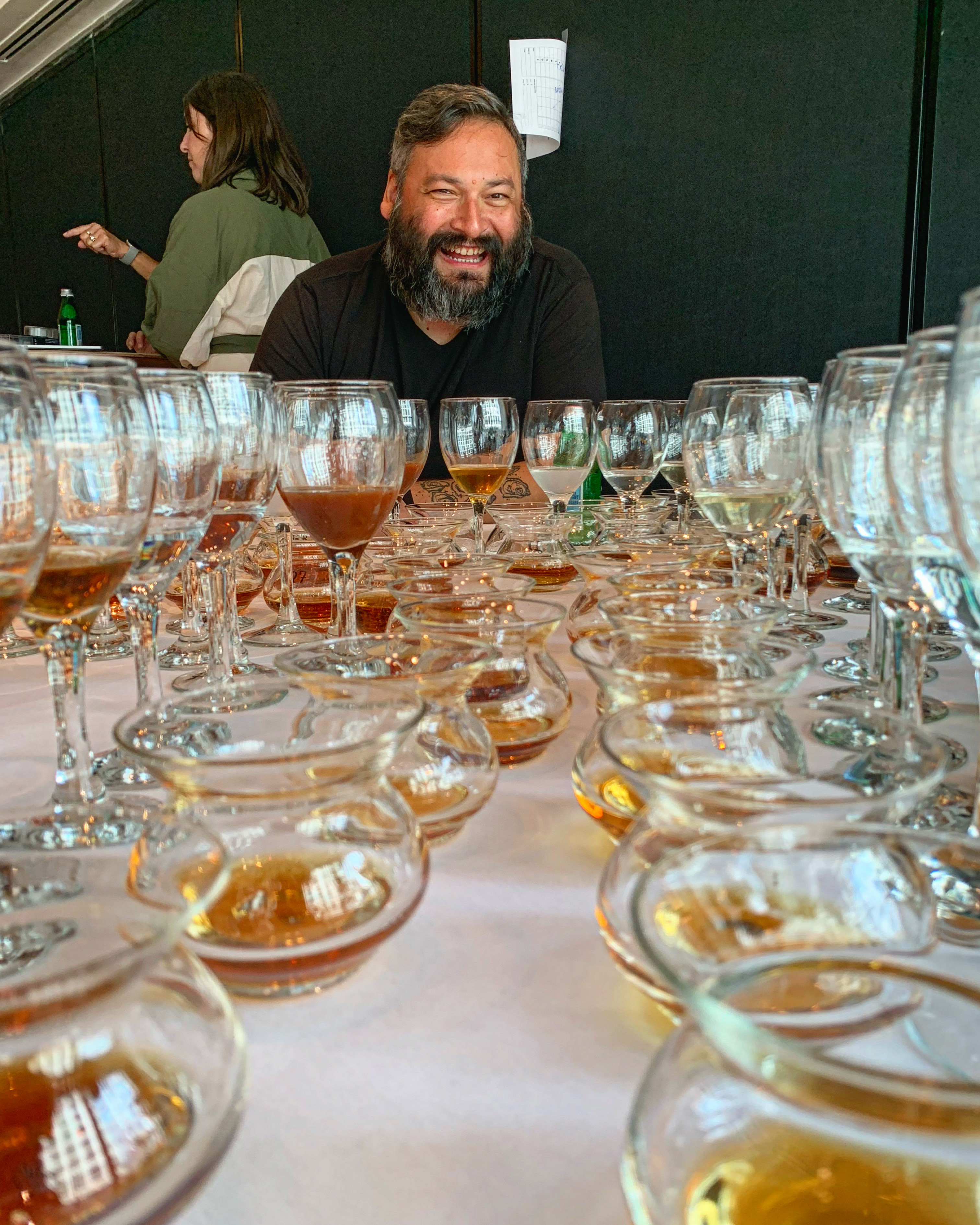
Also Read: The Top 5 UPROXX Bourbon Posts Of The Last Six Months
- We Blind Tasted A Whole Bunch Of $30-60 Bourbons To See If Any Could Beat Weller
- We Put A Whole Bunch Of Bourbons To A Giant Blind Test And Discovered Some Absolute Gems
- We Blind Tasted Classic Bourbons And Were Shocked By The Winner
- The Best-Known Basic Bottles Of Bourbon, Blind Tasted And Ranked
- All The Double Gold-Winning Straight Bourbons From This Year’s San Francisco World Spirits Competition
PART I — Continue To Build Your Palate With Everything You Do
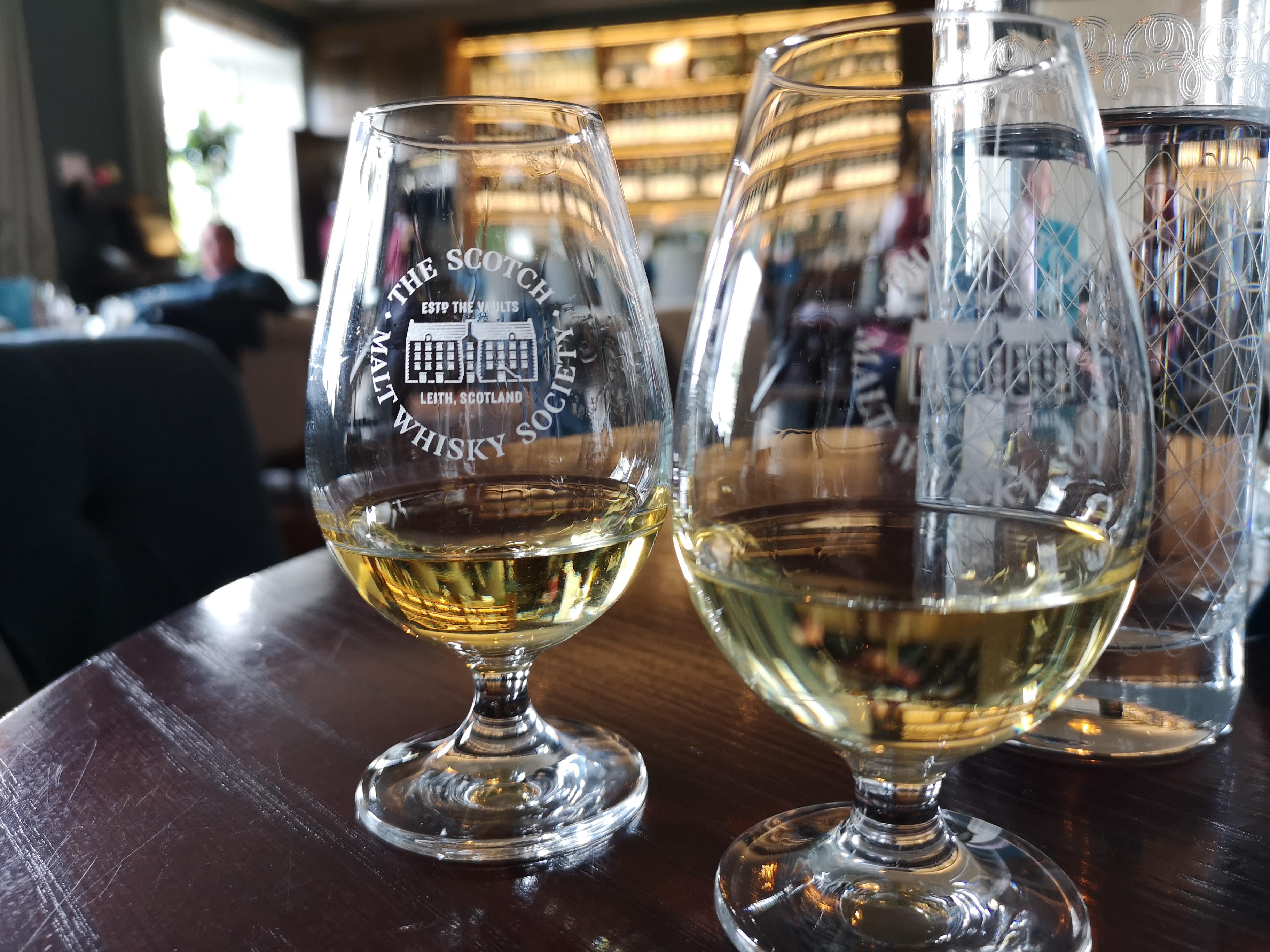
Very simply, you need to live more, eat more, drink more, and experience more to expand and grow your palate. For instance, being afraid of experiencing food from a different culture that’s outside of your norm means that you’ll never have a memory of the flavors or smells that food or drink is associated with. That means that, in turn, you’ll never be able to find similar flavor notes in a whiskey. In very basic terms, if you’ve never eaten funky creamy gorgonzola, you’re never going to find that note in a punchy Chianti or a cognac-finished 15-year-old bourbon.
I was extremely lucky as a child. I lived on a 10-acre working farm with a fruit orchard and 1/4-acre garden, Scottish Highlander cows, hogs, chickens, barn cats, and farm dogs right on the Salish Sea. I grew up foraging in the Olympic Mountains, fishing in the Pacific, and hunting for wild game. I rarely ate processed or boxed food. It was an experiential wonderland. And look, I was still allowed to go to Dairy Queen and McDonald’s. It wasn’t a cult farm situation — I had Taco Tuesdays in elementary school too.
I also had chores. Stacking bales of hay, polishing my dad’s boots, splitting firewood, mowing acres of lawn, washing the cars, and feeding animals. At the same time, I grew up in cafe kitchens that my grandmother owned. I was sorting lettuce leaves and sandwich rolls when I was five. Half of my family are Eastern European immigrants who cooked foods you find in Poland, Russia, Germany, and Lithuania. The other half is Indigenous folks from the Olympic Peninsula where gooey duck, oysters, elk, chanterelles, and wild huckleberries reigned supreme (amongst a million other things).
The point of all this is that I had a lucky childhood that started building a palate on my senses and in my brain before I ever knew what a freakin’ palate was. Those sense memories stick with me to this day and they inform what I taste when a eat or drink anything.
All of that is just my childhood. I could get into what 20 years of living abroad and traveling to somewhere around 80 countries added to my “well of experiences” too. Each stop was a new experience, a new smell, a new taste for the ol’ brain to file away that, in turn, informs my palate to this day. What I tasted in a pour of Wild Turkey 101 while living in Berlin is extremely different than what I taste in the exact same pour living in northern Kentucky. The air is different. The trees are different. My diet is different. The barometric pressure is different. The water is different.
All of this adds up. It’ll add up in your life too and already has throughout your entire life.
How do you continue to expand and build your palate and your brain’s memory of smells and tastes? Take the time to actually stop and smell the air. Taste the water. Feel the barometric pressure in the space around you. All of this makes a difference. Only you can build your palate. And you can only do that by taking the time to experience things.
To really build a pro palate, you cannot be afraid of new flavors, new experiences, or new smells. No one likes blue cheese or whiskey or vegemite the first time they try it. But over time, your palate expands, your brain creates new connections that it can translate, and then those flavors start to become tolerable, then they’re fine, and then, over time, they become desirable. That only happens if you put in the effort to expand your palate by eating, drinking, and experiencing the world around you.
Okay, let’s get into more direct ways that you can actually do some of this in the whiskey sphere.
PART II — Find A Whiskey And Food Pairing Experience Locally
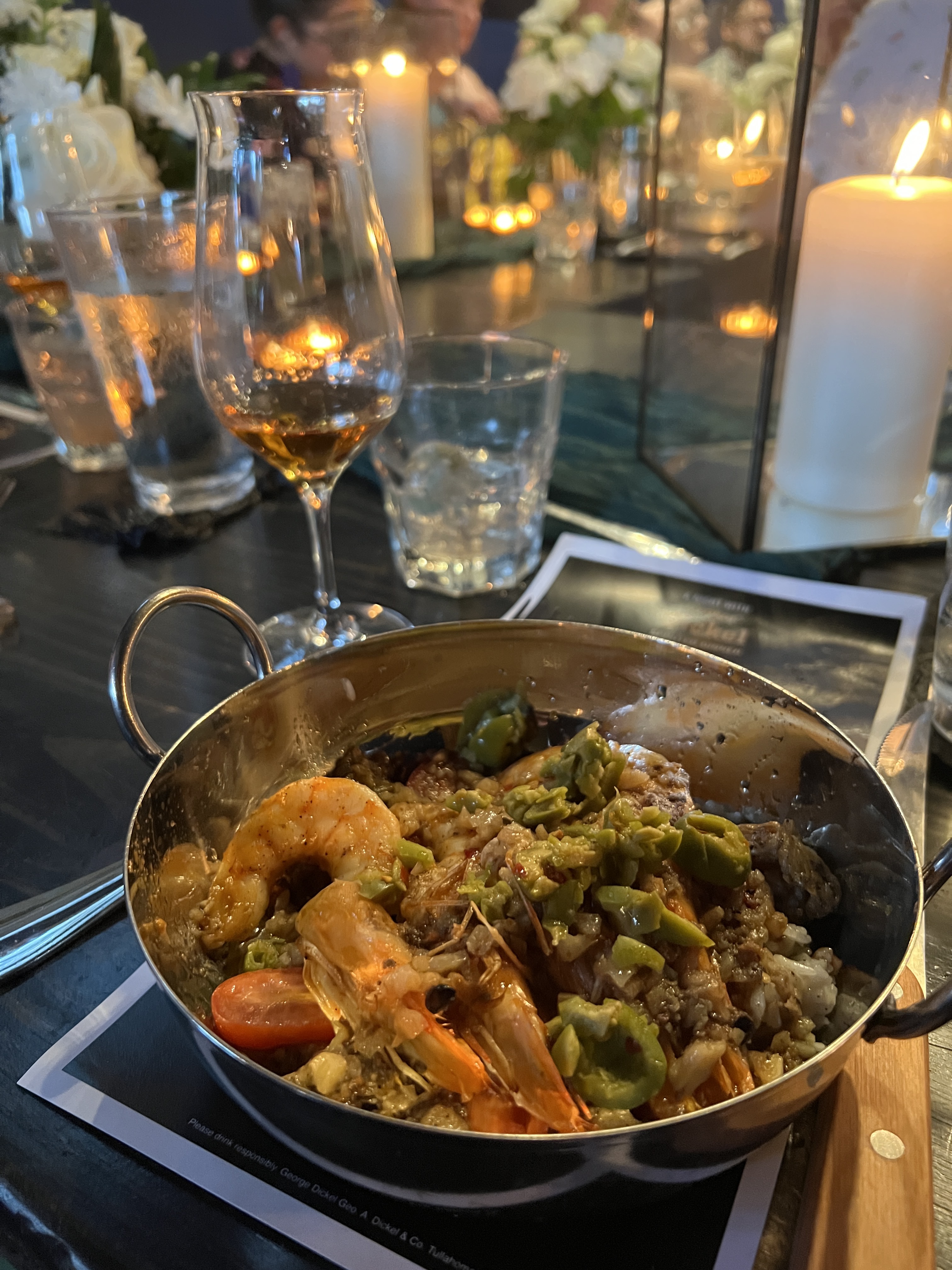
The fastest way to test your new and expanding palate is to go to you a local whiskey bar for a food and whiskey pairing. Very generally, good high-end whiskey bars will have a deep calendar of events wherein great chefs will build entire tasting menus around a whiskey flight or two.
The beauty of joining a whiskey and food pairing is that you can expand your palate while also testing what you already have working on your palate. You can find new flavors while linking them to a pour of whiskey in real-time. That means a good pairing is often just as much about revelation as it is about sharpening already existing palate skills.
Naturally, this will depend on where you live. Still, it’s much easier to find a good whiskey bar in 2022 than it was even five years ago. If you’re in Seattle, The Ballard Cut is the place you want to be. If you’re in DC, Jack Rose Dining Saloon is the place to expand your palate and test your mettle. Bardstown Bourbon Company in Bardstown, Kentucky offers a great food program next to a wide array of bourbons that touch on old and new. Dead Rabbit in NYC, Delilah’s in Chicago, Seven Grand Austin, the list goes on and on.
PART III — Go To Whisky Shows And Taste Everything You Can

One of the other easiest things you can do right now is to go to whiskey events. Consumer events like Whisky Live!, Kentucky Bourbon Festival, and Bourbon & Beyond, to name only a few, are great places to experience whiskey and expand your palate in multiple ways.
Events like Whisky Live! (which had a show in Nashville this summer), are buy-in events where you pay a single fee and then can sample as much whiskey as you can, with a free buffet lunch to boot. Huge brands like Michter’s and Gordon & McPhail bring amazing bottles and simply pour them. The Kentucky Bourbon Festival is the same thing but, naturally, with a bourbon-only focus. These places also have experts there to talk to you, talk about taste, talk about process, talk about the whiskey world in general, talk about food … talk about life.
It’s a great way to both meet people in the industry, but also get a sense of what’s out there. You can taste and ponder and taste again. The best part is there’s often good local food very nearby as well, which helps you expand your palate in non-liquid ways too.
PART IV — Go To Distilleries And Take Part In Tastings
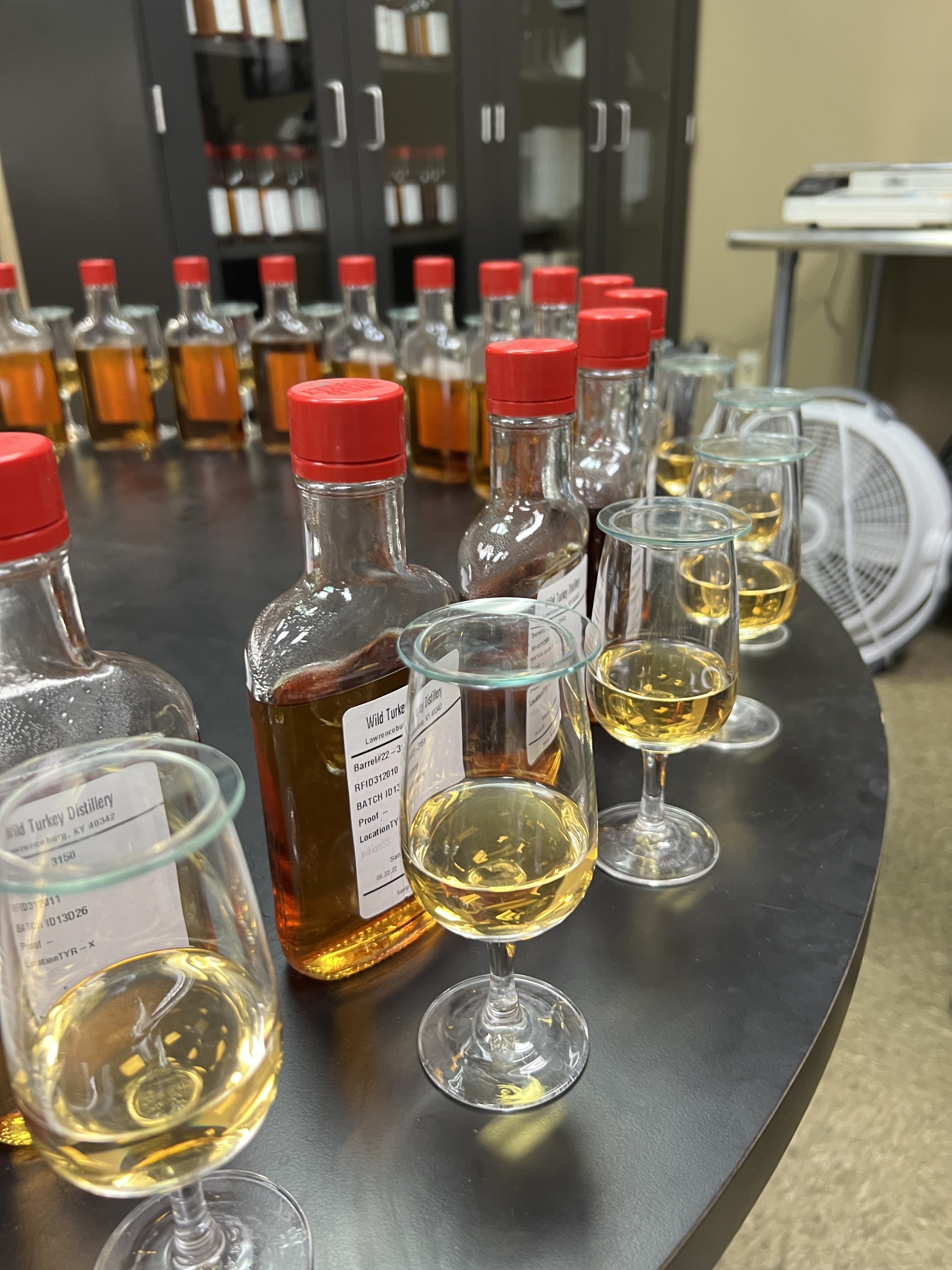
This is probably the most obvious. But almost every distillery that’s open to the public will have a tasting room.
My advice is to start locally. You don’t need to jump on a flight to Scotland or Kentucky to get started. Though that’s always a fun time if you do. Google your local distilleries and book a guided tasting. The distillery pros will help you understand the basic flavor notes in their whiskeys and also what makes them so prominent.
This is also another chance to experience the world around the distillery. What does it smell like when you walk in? What do the trees and bushes around the warehouse smell like? What’s the air like? What do the barrels smell like? All of these things add to the overall experience and you take them with you when you open that whiskey again back at home.
The more distilleries that you experience, the more sensory memories you’ll have. Then when you do make it to Scotland or Ireland or Kentucky, you’ll have a frame of reference. Plus, you’ll be adding in more sensory memories for your palate to experience yet again. The heather of the Scottish Highlands will finally pop on those scotches, the depth of some Kentucky rickhouses will sneak into the nose of your favorite bourbon, and you’ll start to sense the nuances of the place on the palate of your favorite dram in ways you never could have imagined (literally).
It all builds on and on with the more you do.
PART V — Free Your Mind
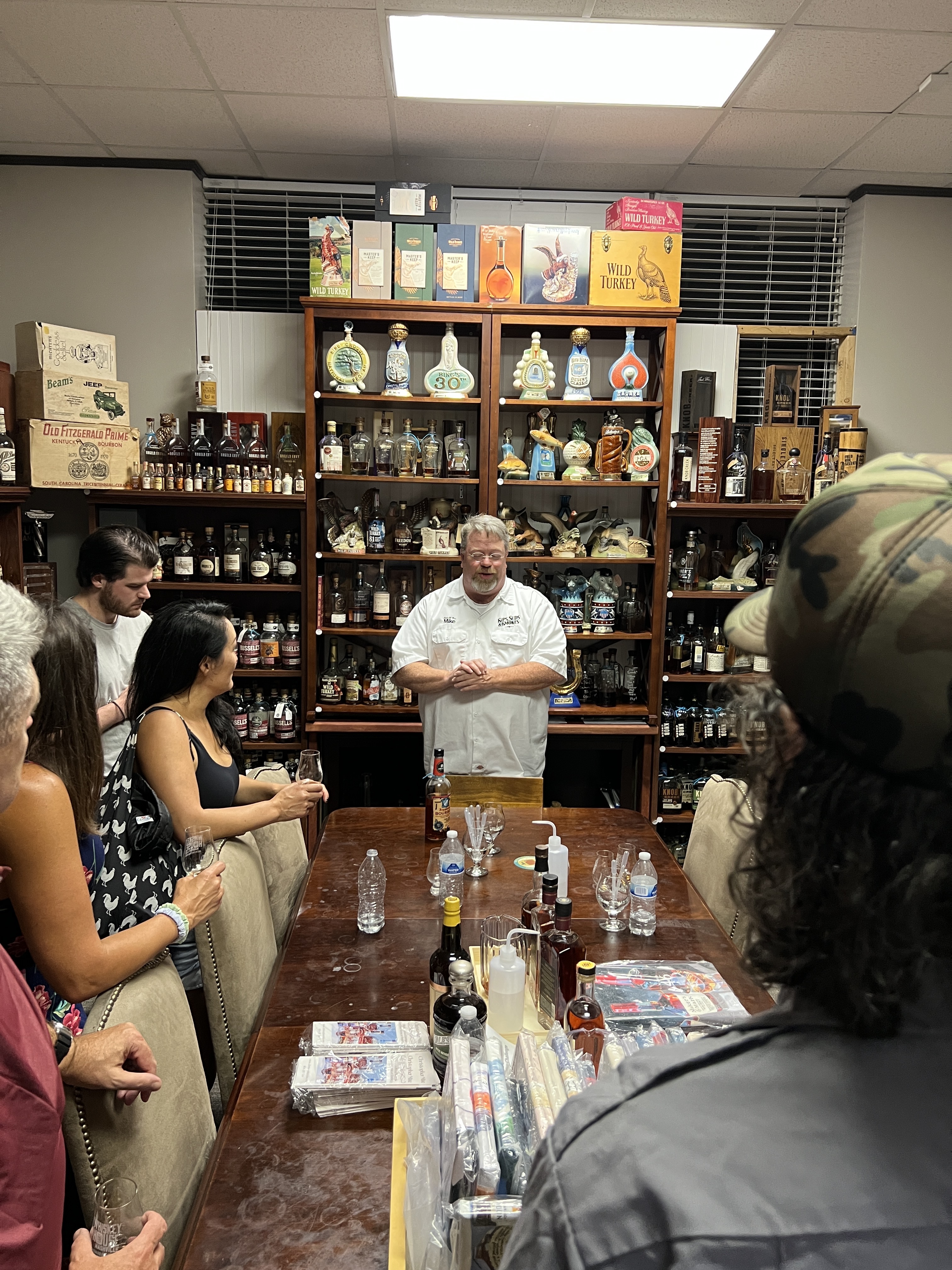
This is probably the most important aspect of building a palate. Besides some real DNA-related taste conundrums like cilantro aversion and super-tasters, you have to open your mind to tasting/experiencing everything you can.
Working in the industry for basically a decade now both behind the bar at very high-end cocktail bars and in the industry as a professional spirits judge, writer, and consultant, I can tell you that the biggest thing that gets in people’s way of experiencing and tasting whiskey (and anything else for that matter) is their own pre-conceived notions.
People have a great tenacity for convincing themselves they don’t like something and will refuse to try it or budge on that point. I’ve seen a lot of people refuse to even try something at all because someone they know didn’t like it one time. It’s baffling and stops you from building your own palate. Yes, this is anecdotal but I taste enough whiskey around enough different people to have seen some version of this over and over again. It’s ridiculous.
That’s not to say everything is great and amazing. My grandfather had an old axiom that I still live by to this day. “Always try everything twice just in case someone fucked it up the first time.” Don’t give up on a taste or smell or flavor profile because it doesn’t make the clouds part and the angels sing the first time you experience it. All of our palates are built upon experiencing and trying things again and again that are “good” and “bad” and “great” and “just fine”. Also, sometimes the quality of one product is just shitty while another version of the same thing will be much better — a very true thing in whiskey. None of this exists in a vacuum.
I know saying “open your mind, man” is very woo-woo. But it’s also science. Palates are trained, built, and expanded, not factory-set for life from birth. If you want to build a whiskey palate like a pro, then you have to go out there and experience the world around you, eat new foods, try new drinks, visit new places, and build that sensory life into your everyday life with an open mind.
Hell, you can start right now by going on a short walk and smelling all the trees and bushes in your yard or neighborhood. It’s that easy to start and it doesn’t cost you a single cent. Best of all, you’ll enjoy things more down the road because of this extra effort!







